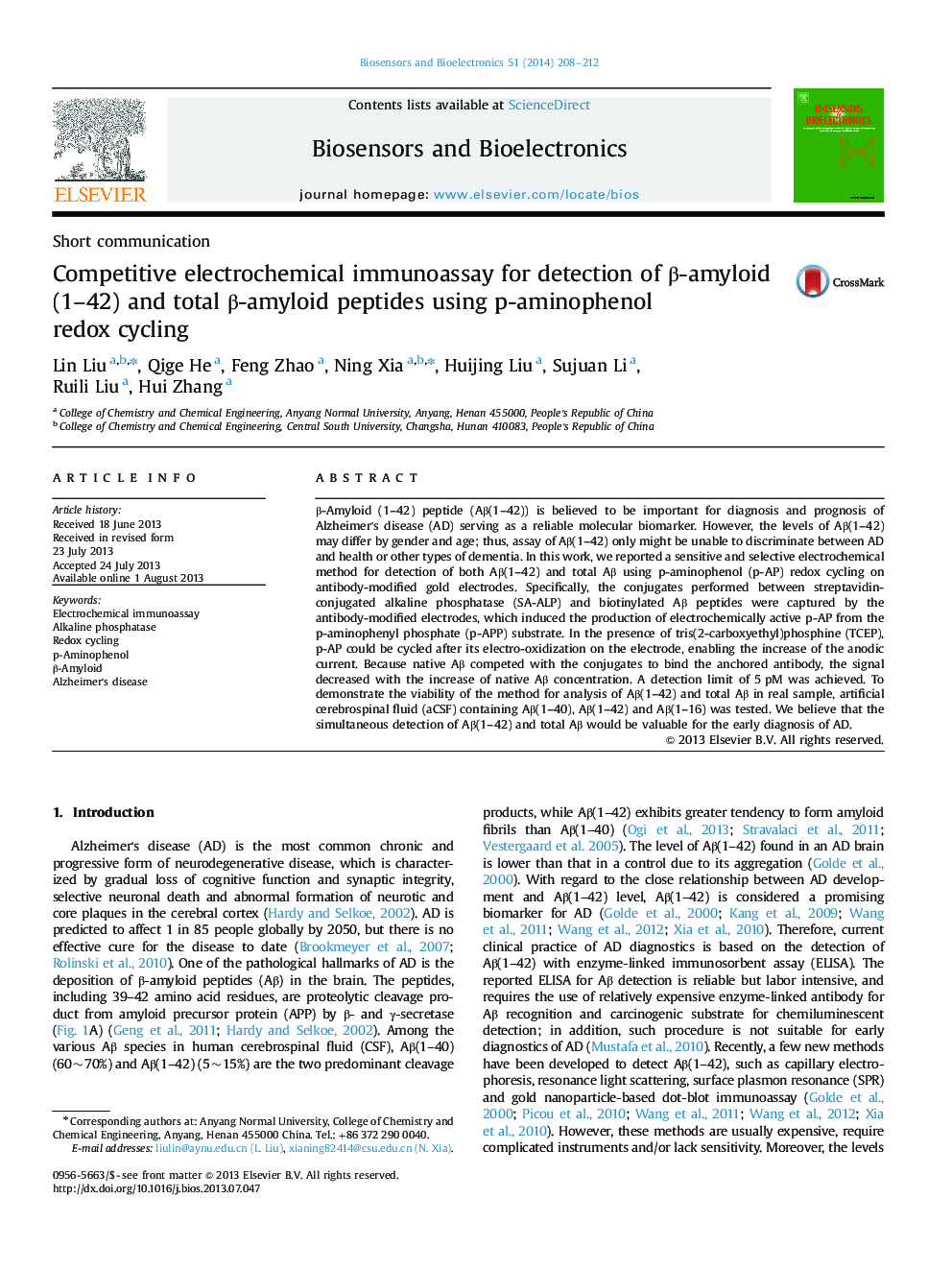| Article ID | Journal | Published Year | Pages | File Type |
|---|---|---|---|---|
| 866600 | Biosensors and Bioelectronics | 2014 | 5 Pages |
•We reported the electrochemical immunoassay of both Aβ(1–42) and total Aβ.•p-Aminophenol redox cycling by TCEP was employed for signal amplification.•A detection limit of 5 pM for Aβ(1–42) and total Aβ was achieved.•The work would be valuable for early diagnosis of Alzheimer's disease.
β-Amyloid (1–42) peptide (Aβ(1–42)) is believed to be important for diagnosis and prognosis of Alzheimer's disease (AD) serving as a reliable molecular biomarker. However, the levels of Aβ(1–42) may differ by gender and age; thus, assay of Aβ(1–42) only might be unable to discriminate between AD and health or other types of dementia. In this work, we reported a sensitive and selective electrochemical method for detection of both Aβ(1–42) and total Aβ using p-aminophenol (p-AP) redox cycling on antibody-modified gold electrodes. Specifically, the conjugates performed between streptavidin-conjugated alkaline phosphatase (SA-ALP) and biotinylated Aβ peptides were captured by the antibody-modified electrodes, which induced the production of electrochemically active p-AP from the p-aminophenyl phosphate (p-APP) substrate. In the presence of tris(2-carboxyethyl)phosphine (TCEP), p-AP could be cycled after its electro-oxidization on the electrode, enabling the increase of the anodic current. Because native Aβ competed with the conjugates to bind the anchored antibody, the signal decreased with the increase of native Aβ concentration. A detection limit of 5 pM was achieved. To demonstrate the viability of the method for analysis of Aβ(1–42) and total Aβ in real sample, artificial cerebrospinal fluid (aCSF) containing Aβ(1–40), Aβ(1–42) and Aβ(1–16) was tested. We believe that the simultaneous detection of Aβ(1–42) and total Aβ would be valuable for the early diagnosis of AD.
